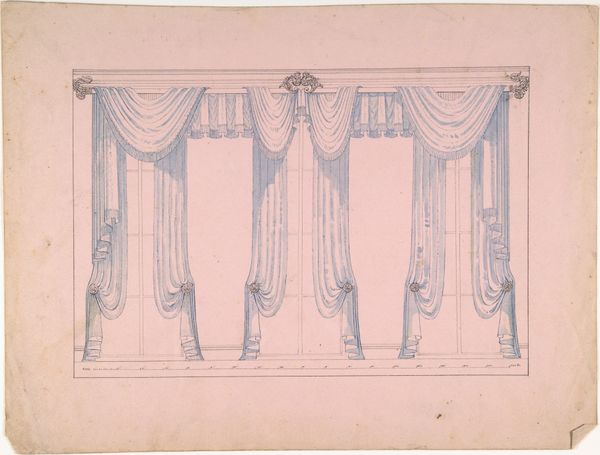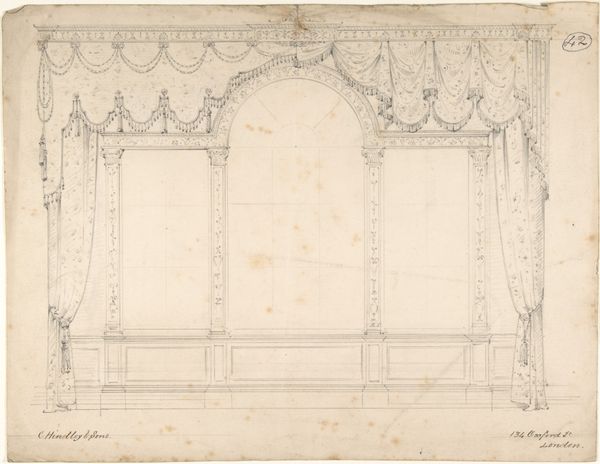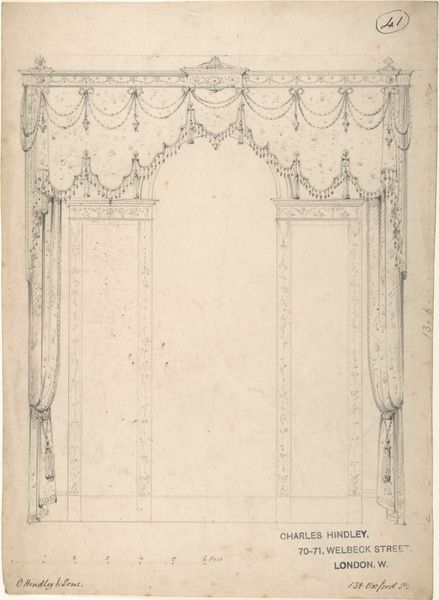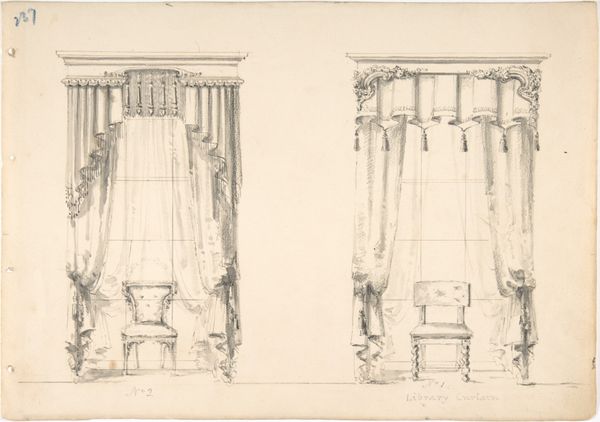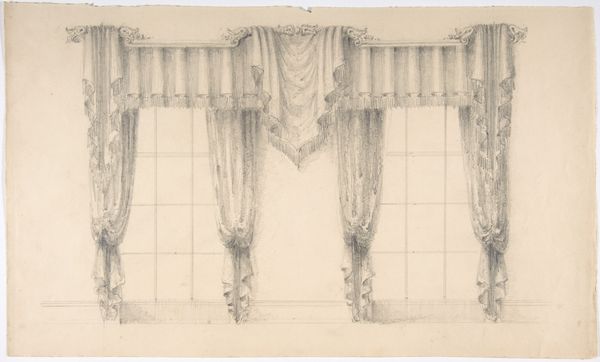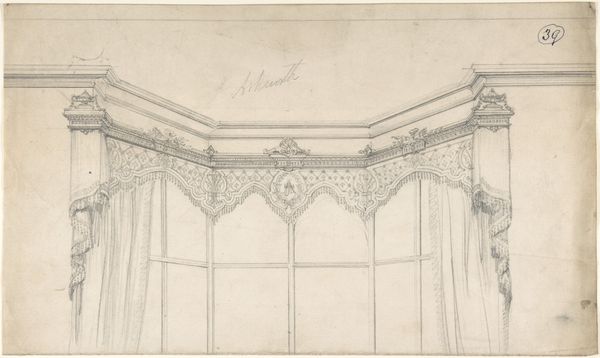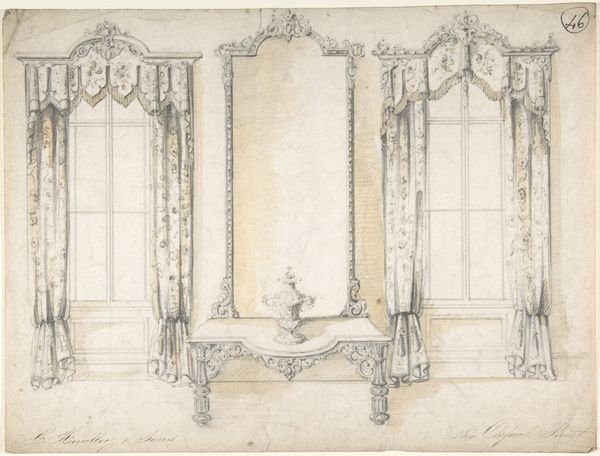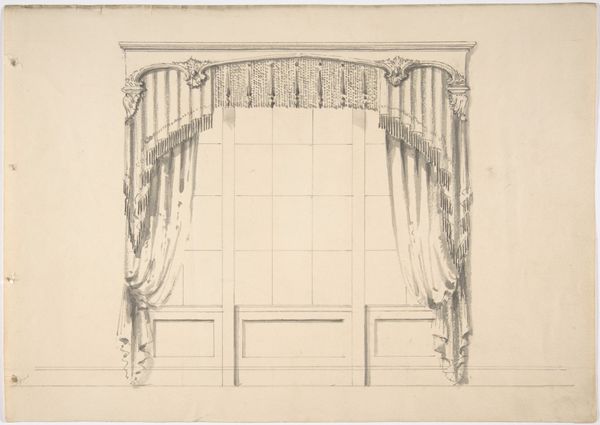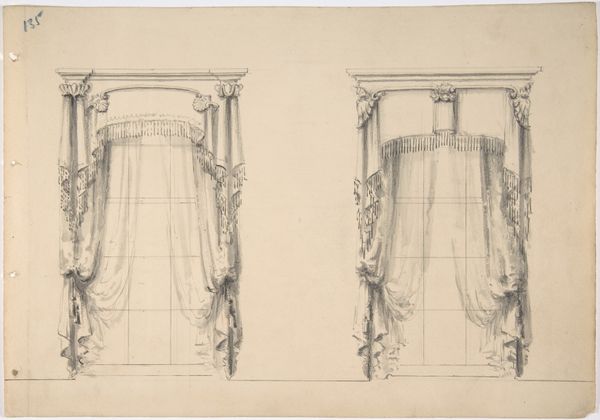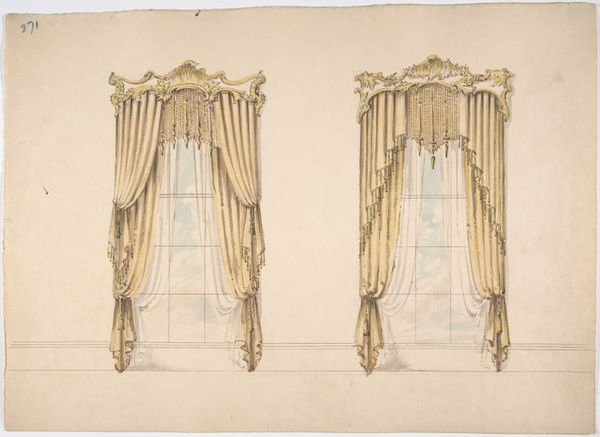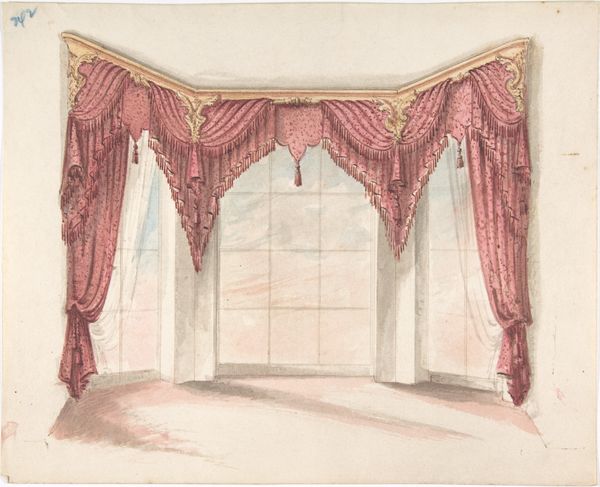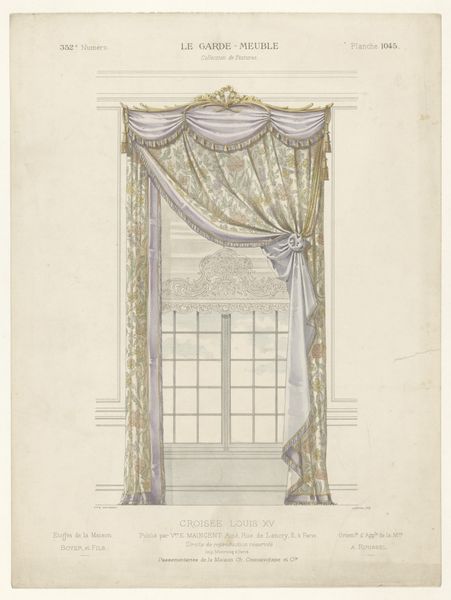
Design for Curtains for Three Windows 1841 - 1884
0:00
0:00
Dimensions: sheet: 10 3/4 x 14 1/2 in. (27.3 x 36.8 cm)
Copyright: Public Domain
Curator: What strikes me first is the sort of serene melancholy it evokes. I mean, isn't it interesting how such a functional design for curtains, meticulously rendered in pencil, can also feel so introspective? Editor: Absolutely, the ghost of a space...it's more than just an architectural sketch, isn’t it? Let's give a bit of context. This is a drawing entitled "Design for Curtains for Three Windows," likely from the prolific firm of Charles Hindley and Sons. Dating roughly from 1841 to 1884, the design embraces that era's inclination toward neoclassical symmetry while offering us a tantalizing view into a privileged interior. Curator: "Privileged interior" – nicely put. Because who has three such elegantly draped windows in a curved room? I’m getting a whiff of a ballroom, or perhaps a grand salon...there is a palpable tension between interiority and exteriority. Editor: Windows, of course, have always served as these charged liminal spaces, and so have curtains: screening devices both promising and withholding access...Hindley here seems concerned with that negotiation of access and of what, or whom, is kept just beyond reach. Curator: Tell me more. I feel that reaching, for sure! The tassels are dangling, almost like teardrops. They're literally *hanging* there...on some emotion, perhaps? And then, this pale light that is seeping from outside; it is beckoning. I almost hear whispers through those sheer curtains. Editor: I am drawn to that notion of whispered secrets... Curtains, inherently transient, remind us that the display of wealth and social status is also subject to change, concealing a world no longer fully accessible. The perspective, almost theatrical, enhances the drama. There’s a tension here that lingers long after the pencil lines fade from view. Curator: Indeed. The drama, to me, comes precisely from that liminal state: half there, half hidden, the design simultaneously suggests enclosure and openness. Which then begs the question...What are they obscuring... from *whom*? Editor: Leaving us with a feeling of almost nostalgic contemplation, wouldn’t you say? An era fading, as it often does. Curator: Very much. Like the afterimage of a waltz in an empty room.
Comments
No comments
Be the first to comment and join the conversation on the ultimate creative platform.

